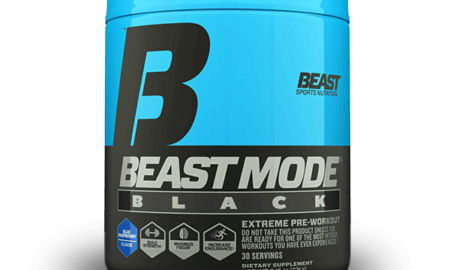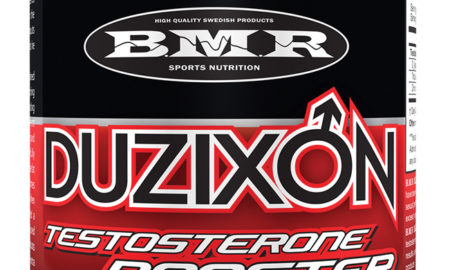 We all know of the potent anabolic effects of testosterone. They were demonstrated more than 70 years ago but were nevertheless long debated among scientists. With the advent of synthetic versions of testosterone, known as anabolic steroids, in the late 1950s, the debate about testosterone’s health effects grew even more strident. For years such organizations as the American College of Sports Medicine issued official statements holding the curious position that any apparent mass gain induced by steroid use was entirely attributable to water retention. In the meantime, bodybuilders were getting much larger muscles and world records were dropping thanks to the “water-retaining” drugs.
We all know of the potent anabolic effects of testosterone. They were demonstrated more than 70 years ago but were nevertheless long debated among scientists. With the advent of synthetic versions of testosterone, known as anabolic steroids, in the late 1950s, the debate about testosterone’s health effects grew even more strident. For years such organizations as the American College of Sports Medicine issued official statements holding the curious position that any apparent mass gain induced by steroid use was entirely attributable to water retention. In the meantime, bodybuilders were getting much larger muscles and world records were dropping thanks to the “water-retaining” drugs.
The debate ended once and for all with the publication in the New England Journal of Medicine of a landmark 1996 study. It showed, beyond a doubt, that getting 600 milligrams of testosterone enanthate a week for 10 weeks increased muscle mass and strength, even in men who didn’t lift weights, compared to men who got a placebo. Testosterone injections brought even greater results (as expected) when weight training was added to the mix.
All that was old news to the bodybuilding world. Although rumors of testosterone use among athletes started not long after the hormone was isolated in 1935, the first documented use for athletic purposes occurred in the mid-1950s, when it was revealed that Russian weightlifters were using it.
Even before that happened, however, many health benefits of testosterone had been suggested. In the late 1940s it was hailed as a cure for male depression. Although that soon fell out of favor due to fears about long-term health effects of testosterone use, more recent studies have shown that testosterone does indeed appear to offer some relief for depression by altering certain brain neurotransmitters. That brings up a question not often discussed: Just how long does it take for the effects of testosterone to become apparent?
A recent review examined all the existing research on the timing of the various effects of testosterone.1 One caveat to consider before I get into the details: The time effects pertain to men diagnosed with clinically low testosterone, so men with normal-range testosterone—as measured by accurate free testosterone rather than total testosterone—might have different responses than those documented by this review. In any case, here’s what the authors found.
How Long for Muscle Mass and Strength Effects?
The famous 1996 study that proved the muscle-building effects of testosterone noted that they were dose related. Simply put, if you use too small a dose of testosterone, you won’t get the same anabolic effects as you would with larger doses. That’s interesting, since the major goal of testosterone-replacement therapy is to boost deficient testosterone levels to a point midway on the testosterone-blood-measurement scale. Yet, according to the 1996 study, building muscle would require a minimum of testosterone that would be on the high end of the scale, or about what a male teenager would produce. That’s the highest level ever produced by most men.
One study that involved using testosterone with growth hormone found a significant increase in lean body mass. Maximum muscle strength occurred by the 16th week. Another study showed that it took 12 weeks to reach maximum strength levels with testosterone alone.
Studies examining the time course for muscle and strength effects related to testosterone use have varied. If you average them out, however, the maximum muscle and strength occur 12 to 20 weeks after testosterone use begins, depending on the dose. Obviously, the higher the weekly dose, the quicker the muscle and strength gains manifest. The maximum effects are achieved in six to 12 months of continual testosterone use.
Bone Density
Many people are aware that women with long-term estrogen deficiency are more prone to getting osteoporosis, a bone-thinning disease. Less well-known is that men deficient in testosterone can also be affected by the disease and, strangely, for the same reason. A certain amount of testosterone produced daily is converted by the enzyme aromatase into estrogen. Estrogen, in turn, protects bone from excessive breakdown. Even so, men’s having less testosterone doesn’t necessarily mean that they have less estrogen. In fact, an imbalance of the estrogen-to-testosterone ratio is common in older men.
While the natural testosterone production in men drops in each decade past age 40, estrogen continues to be made thanks to aromatase, which doesn’t decrease with age. As a consequence, estrogen goes up, while testosterone drops, and much of the smaller production of testosterone in older men falls prey to conversion into estrogen. That has implications for health: Higher estrogen in older men is linked to prostate cancer and cardiovascular disease; however, the same higher estrogen also may protect bone mass. That scenario would only be applicable to men with higher bodyfat, since fat is a prime area of aromatase activity. In men who are lean, the lack of sufficient testosterone could result in them suffering from osteoporosis.
Similar to what happens with estrogen, testosterone favors an increase in bone density, especially in the spine. The longer men use it, the greater the boost in bone density.
Body Composition
Testosterone is known to play a significant role in helping to prevent obesity. One way is by controlling the pathway of pluripotent stem cells, immature cells that can take a pathway to become either fat cells or muscle cells. With sufficient testosterone on hand those cells take the pathway to muscle. T also prevents the conversion of such cells into fat cells. With age, men tend to accumulate fat in the midsection. The deep-lying fat in the abdomen, known as visceral fat, is the most dangerous fat in the body. It is labile, meaning that it’s constantly being broken down. When that happens, the fat is transported to the liver, where it’s converted into cholesterol. Visceral fat is also associated with diabetes, insulin resistance and cardiovascular disease.
One reason that men begin to accumulate abdominal fat is of a downgrade of adrenergic fat cell receptors in the abdomen. It’s related to a lack of testosterone. When testosterone is provided, the dormant beta-adrenergic receptors open up again, and men lose fat in the abdominal area, along with an accompanying reduction in health risks related to having fat there. Fat loss in the abdominals usually shows up after three months of supplemental testosterone use in deficient men.
Testosterone and Lipids
Although many doctors refuse to prescribe testosterone because they believe that it promotes cardiovascular disease, in fact the opposite is true. Testosterone begins to lower elevated cholesterol in about a month. The average significant drop happens in about three months after men start using it. Serum triglycerides also drop after about a month. Low-density lipoprotein, or LDL—the “bad cholesterol”—takes a bit longer to drop, averaging three months, with maximal effects occurring by the two-year mark.
As for high-density lipoprotein, which is considered protective against cardiovascular disease, some studies show a rise, others a drop. Since much of the effect of testosterone on HDL depends on conversion into estrogen, if you also use an aromatase-inhibiting drug, which blocks the conversion of T into estrogen, testosterone’s beneficial effects on HDL may not be as apparent. Recent studies with Arimidex, a popular aromatase inhibitor, show that the effect isn’t as common as was previously believed. HDL increases with testosterone follow the same time frame as its effects on LDL.
Testosterone and Blood Glucose Levels
The incidence of diabetes world-wide is increasing alarmingly. In most cases it’s due to a combination of obesity and lack of physical activity. Since testosterone also helps to control bodyfat, especially the type of fat most linked to insulin resistance, visceral fat, it makes sense that testosterone may help prevent diabetes by easing some of the early symptoms of the disease, such as insulin resistance. Testosterone helps to lower elevated blood glucose but doesn’t affect normal glucose levels. It also lowers insulin (which itself helps you lose fat). Those effects show up in three to nine months, according to studies. In fact, the lowering of elevated blood glucose and improvement in insulin resistance can show up after only a month of testosterone use, especially if you also exercise. T can lower elevated glucose in only one week!
Blood Pressure and
Cardiovascular Effects
Testosterone lowers diastolic blood pressure in three to nine months, and drops resting heart rate after 40 to 44 weeks. It also lowers arterial stiffness, a prime cause of cardiovascular disease, in only two days. T relieves angina pectoris, linked to atherosclerosis of the coronary arteries, after 14 weeks and increases exercise capacity in heart failure patients after three months.
T and Inflammation
Excess body inflammation is now known to be the cornerstone of most major diseases. Low testosterone and estrogen both are associated with greater overall body inflammation. T lowers cytokines, mediators of body inflammation, in about 16 weeks, but it lowers elevated C-reactive protein, a marker of inflammation, in only three weeks. Other markers of inflammation drop after a month of testosterone therapy, and a chemical produced in the body that blocks nitric oxide synthesis decreases in only 10 days.
Other Effects
T boosts libido, or sex drive, in an average of three weeks and provides beneficial effects on erections after three weeks as well. Depression is relieved after three weeks, along with a significant elevation in mood. Anxiety goes down, while self-confidence goes up after a month on testosterone. Fatigue drops after a month too.
So there you have it. As noted, these times to effect are based on giving testosterone to men who don’t have enough. The times will vary with younger men who aren’t deficient in the hormone.
1 Saad,F., et al. (2011). Onset of effects of testosterone treatment and time span until maximum effects are achieved. Eur J Endocrin. 165(5): 675–685.




















You must be logged in to post a comment Login